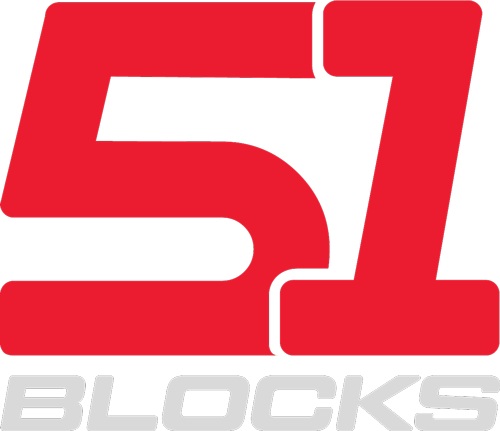Hey there!
Want to boost your digital agency’s profitability? Optimizing your outsourced digital agency pricing can make a big difference. By understanding your client’s budgets, leveraging value-based pricing, and implementing retainer models, you can maximize your profits while providing top-notch service.
Balancing fixed and variable costs, utilizing performance-based pricing, and incorporating upselling and cross-selling can also help you achieve your financial goals. Managing discount and incentive structures, along with monitoring and adjusting profit margins, are key to staying profitable in the long run.
With these strategies, you can ensure that your agency thrives while delivering exceptional value to your clients. Ready to optimize your pricing for profitability? Let’s dive in!
Key Takeaways
- Conduct a thorough budget analysis to understand client’s financial parameters
- Tailor pricing to match client’s budget and offer different pricing packages or options
- Implement a client-centric pricing model that aligns with clients’ business goals
- Tailor pricing models to reflect the measurable impact of services and establish transparency and importance of results
Understanding Client Budgets
Understand your client’s budget for effective outsourced digital agency pricing. When it comes to understanding client expectations, one of the most crucial aspects is conducting a thorough budget analysis. By delving into your client’s budget, you can gain valuable insights into their financial limitations and goals, allowing you to tailor your outsourced digital agency pricing to their specific needs.
Start by having an open and honest conversation with your client about their budget. This will help you understand what they’re willing and able to invest in your services. By doing so, you can manage their expectations and avoid any misunderstandings down the line. It’s essential to approach this conversation with empathy and a genuine desire to find a solution that works for both parties.
Once you have a clear understanding of your client’s budget, conduct a comprehensive analysis to determine how your services can align with their financial parameters. Consider offering different pricing packages or options that cater to varying budget levels. This demonstrates your flexibility and willingness to accommodate their financial situation, fostering a sense of belonging and partnership.
Leveraging Value-Based Pricing
Now, let’s talk about how you can use value-based pricing to better align your costs with the value you provide to your clients.
By implementing a client-centric pricing model, you can ensure that the price reflects the specific value your agency delivers to each client.
This approach not only maximizes your profitability but also strengthens your client relationships by demonstrating the tangible benefits they receive for their investment.
Client-Centric Pricing Models
You should leverage value-based pricing to create client-centric pricing models that align with your clients’ business goals and metrics.
By understanding and valuing the impact of your digital agency’s services on your clients’ bottom line, you can offer pricing transparency that builds client trust.
Customized solutions based on the specific needs and objectives of each client will lead to higher client satisfaction.
This approach demonstrates that you’re committed to delivering tangible results and are invested in the success of your clients.
When your pricing is directly tied to the value you provide, it fosters a stronger partnership and aligns your interests with those of your clients.
Ultimately, this client-centric approach will fortify your relationships, drive long-term collaboration, and contribute to the mutual growth and success of both your agency and your clients.
Aligning Cost With Value
To effectively align cost with value and leverage value-based pricing, tailor your pricing models to directly reflect the measurable impact of your digital agency’s services on your clients’ bottom line. Cost transparency is key in this process.
Start by understanding the specific value your services bring to your clients. This could be in the form of increased sales, improved brand visibility, or enhanced customer engagement. Once you have a clear picture of the value you provide, structure your pricing in a way that reflects this value.
This approach, often referred to as value-driven pricing, ensures that your clients see the direct correlation between the cost of your services and the impact on their business. By embracing value-driven pricing, you not only establish transparency but also reinforce the importance of the results you deliver.
This strategy fosters a strong sense of partnership and mutual success between your agency and your clients, ultimately leading to long-term relationships built on trust and value.
As you consider aligning your cost with value, it’s essential to also explore implementing retainer models to further optimize your pricing strategy.
Implementing Retainer Models
Implementing a retainer model can provide stability and predictability for both your digital agency and your clients. This model allows for retainer flexibility, ensuring that you can easily adapt to your clients’ changing needs while maintaining client satisfaction. By offering a long term commitment, you can establish a stable revenue stream for your agency, creating a win-win situation for both parties.
When you implement a retainer model, you can enjoy several benefits:
- Consistent Cash Flow: Retainers provide a predictable income stream, allowing you to better manage your agency’s finances and plan for future growth.
- Priority Service: Clients on retainer often receive priority attention, ensuring that their needs are promptly addressed, which can lead to increased satisfaction and loyalty.
- Deeper Client Relationships: Long-term commitments foster stronger client relationships, leading to trust, open communication, and a better understanding of their business, which can result in more effective digital strategies.
- Efficient Resource Allocation: With a clear understanding of your retained clients’ needs, you can allocate resources more efficiently, reducing downtime and optimizing productivity.
Balancing Fixed and Variable Costs
Balancing your digital agency’s fixed and variable costs is crucial for maintaining financial stability and maximizing profitability. To achieve this, it’s essential to conduct a thorough variable cost analysis. Identify the costs that fluctuate based on your agency’s level of activity, such as project-specific labor, materials, and other expenses. Understanding these variable costs will enable you to establish a more accurate pricing strategy, optimizing your profitability.
When balancing fixed and variable costs, it’s important to consider how changes in activity levels impact your expenses. By aligning your pricing strategy with these insights, you can ensure that your agency remains profitable regardless of fluctuations in demand. This approach not only enhances your financial stability but also enables you to offer competitive pricing while maintaining healthy profit margins.
Incorporating a mix of fixed and variable costs into your pricing model can provide a level of flexibility that benefits both your agency and your clients. It allows you to adapt to changing market conditions while ensuring that your pricing remains fair and sustainable. By optimizing your pricing strategy in this manner, you can foster long-term relationships with clients and position your agency for continued success.
As you navigate the complexities of balancing fixed and variable costs, the next step is to explore the benefits of utilizing performance-based pricing. This approach can further enhance your profitability while aligning your incentives with your clients’ goals.
Utilizing Performance-Based Pricing
Maximizing profitability through performance-based pricing requires careful assessment of key metrics and clear alignment with client objectives. By utilizing performance-based pricing, you can ensure that both you and your client are invested in the success of the digital marketing initiatives.
Here are some key elements to consider:
- Performance Tracking: Implement robust performance tracking tools to accurately measure the impact of your digital marketing efforts. This data will be crucial in determining the success of the campaign and justifying the pricing structure.
- Client Satisfaction: Prioritize client satisfaction by aligning your performance metrics with their business goals. Understanding their key performance indicators (KPIs) will enable you to tailor pricing based on the actual impact on their bottom line.
- Risk Sharing: Embrace the concept of risk sharing by tying a portion of your compensation to the performance of the digital campaigns. This not only demonstrates your confidence in your ability to deliver results but also aligns your interests with those of your client.
- Revenue Sharing: Consider incorporating revenue sharing models where your compensation is directly linked to the revenue generated from the digital marketing efforts. This can be a powerful incentive for both parties to work towards maximizing the impact of the campaigns.
Incorporating Upselling and Cross-Selling
When it comes to incorporating upselling and cross-selling into your digital agency pricing strategy, it’s important to consider offering service bundle incentives to entice clients to upgrade their packages.
Start by conducting a thorough client needs assessment to identify additional services or products that would benefit your clients and align with their goals.
Service Bundle Incentives
You can boost your profitability by incorporating upselling and cross-selling into your service bundle incentives. By offering additional services or products alongside your core offerings, you not only increase the value for your clients but also enhance your revenue streams.
To effectively implement these incentive strategies, consider package customization to tailor offerings to each client’s specific needs. Here are some practical ways to incorporate upselling and cross-selling into your service bundle incentives:
- Offer discounted add-on services when clients purchase a core package
- Provide complimentary products or services as a bonus for upgrading to a higher-tier package
- Create bundled packages that combine related services at a discounted rate
- Implement a referral program where clients who refer new business receive exclusive add-ons or discounts
Client Needs Assessment
To effectively assess client needs and incorporate upselling and cross-selling, start by understanding their business objectives and pain points.
By delving into what drives their business and identifying areas where they may be struggling, you can tailor customized solutions that address their specific needs.
Engage in open and honest conversations to uncover opportunities for upselling and cross-selling that align with their goals.
By doing so, you not only provide value to your clients but also increase your profitability.
Remember, the key is to focus on client satisfaction by offering solutions that genuinely meet their needs.
This approach not only strengthens your relationship with the client but also opens the door for future business as they experience the benefits of your tailored offerings.
Managing Discount and Incentive Structures
Regularly review and adjust discount and incentive structures to ensure they align with your digital agency’s profitability goals. Incentive management and discount strategies play a crucial role in shaping the financial health of your agency.
Here are some practical steps to effectively manage discount and incentive structures:
- Evaluate Client Profitability: Assess the profitability of each client to determine if the current discount and incentive structures are sustainable. Consider adjusting incentives for clients that consistently require additional resources beyond the scope of the original agreement.
- Align Incentives with Desired Client Behavior: Tailor incentives to encourage behaviors that benefit your agency’s bottom line. For instance, offer discounts for early project approvals to streamline workflow and reduce project management costs.
- Monitor Discount Impact on Profit Margins: Regularly analyze the impact of discounts on your agency’s profit margins. Determine if the current discount structures are sustainable and adjust them to maintain profitability.
- Leverage Performance-Based Incentives: Implement performance-based incentives to motivate your team and ensure high-quality work. Reward exceptional performance with bonuses or other incentives tied to specific metrics.
Monitoring and Adjusting Profit Margins
To effectively monitor and adjust profit margins, consistently analyze and compare your agency’s revenue and expenses. Start by ensuring pricing transparency and client trust. Communicate openly with clients about your pricing structure and the value you provide. This transparency builds trust and helps clients understand the reasoning behind your pricing, making them more likely to accept it without the need for extensive negotiations.
Flexibility is also key when it comes to pricing negotiations. Monitor your profit margins regularly and be prepared to adjust pricing as necessary. If you find that certain services are consistently eating into your profit margins, consider revising the pricing for those specific offerings. On the other hand, if you notice areas where you could potentially charge more based on the value you’re delivering, don’t hesitate to make those adjustments.
It’s important to have a clear understanding of your expenses and revenue streams. Regularly review your costs and look for opportunities to optimize them. This could involve renegotiating contracts with vendors, finding more cost-effective tools and resources, or streamlining internal processes to reduce operational expenses.
Frequently Asked Questions
How Can Outsourced Digital Agencies Effectively Negotiate and Manage Client Budgets to Ensure Profitability?
When negotiating with clients, use strategic negotiating tactics to ensure profitability.
Effective client communication is key, so be transparent about the value you provide and the costs involved.
Understand their budget constraints and offer tailored solutions that meet their needs while maximizing your profitability.
Building trust and demonstrating the benefits of your services will help you negotiate and manage client budgets effectively.
What Strategies Can Outsourced Digital Agencies Use to Accurately Assess and Price Services Based on the Value They Provide to Clients?
When assessing value, outsourced digital agencies should focus on the unique benefits their services bring to clients.
By understanding your client’s needs and the impact your work has on their business, you can craft a pricing strategy that aligns with the value you provide.
Consider implementing tiered pricing based on the level of service and outcomes.
This approach not only showcases your value but also offers flexibility for clients with varying needs and budgets.
How Can Outsourced Digital Agencies Effectively Implement and Manage Retainer Models to Maximize Profitability?
To effectively implement and manage retainer models for maximum profitability, start by establishing effective communication with clients. Understand their needs and provide tailored services.
Focus on client satisfaction to retain long-term partnerships. Analyze profitability regularly to ensure your pricing strategy is sustainable.
Differentiate your services to showcase unique value. By prioritizing effective communication, client satisfaction, profitability analysis, and service differentiation, you can successfully optimize retainer models for profitability.
What Are the Best Practices for Balancing Fixed and Variable Costs Within an Outsourced Digital Agency to Ensure Profitability?
Striking the right balance between fixed and variable costs is crucial for your outsourced digital agency’s profitability. By carefully structuring your cost framework and optimizing revenue streams, you can achieve sustainable financial success.
Embracing a dynamic approach to cost management and seeking opportunities for revenue enhancement will help you navigate the complexities of agency pricing. Remember, a savvy combination of fixed and variable costs is key to securing your agency’s profitability and long-term growth.
What Metrics and Strategies Can Outsourced Digital Agencies Use to Effectively Implement Performance-Based Pricing and Maximize Profitability?
To effectively implement performance-based pricing and maximize profitability, outsourced digital agencies can start by analyzing client needs and aligning pricing with the value delivered.
Use metrics like customer acquisition cost, customer lifetime value, and ROI to inform pricing optimization.
Additionally, focus on client negotiation to ensure fair compensation for the value provided.
Final Thoughts
So, as you can see, optimizing outsourced digital agency pricing for profitability is like fine-tuning a well-oiled machine.
By understanding client budgets, leveraging value-based pricing, and implementing retainer models, you can ensure that you are pricing your services in a way that is aligned with the value you provide to your clients.
Balancing costs and utilizing performance-based pricing allows you to make sure that your pricing strategy is both competitive and profitable.
Incorporating upselling and cross-selling techniques can help you maximize your revenue by offering additional services or products to your clients.
Managing discounts effectively can also be a valuable tool in attracting new clients or incentivizing existing ones to increase their spending.
Monitoring profit margins is crucial to ensure that your pricing strategy is generating the desired level of profitability for your agency.
By continuously adjusting and fine-tuning your pricing strategy based on these principles, you can keep your agency’s profitability in top shape!






